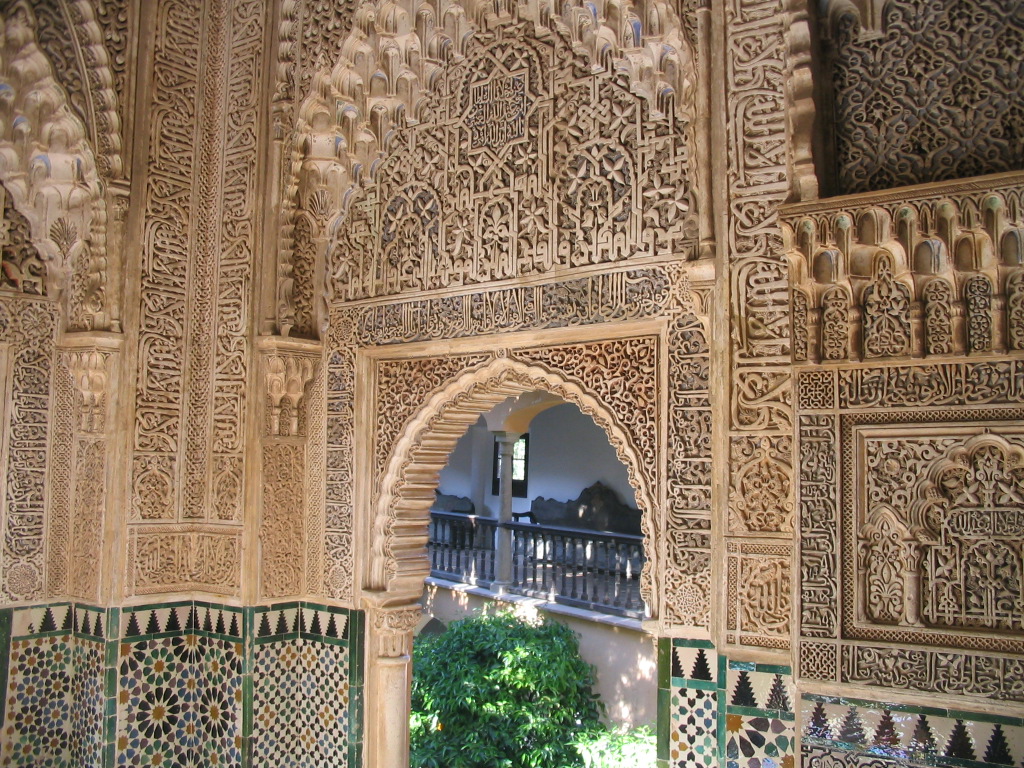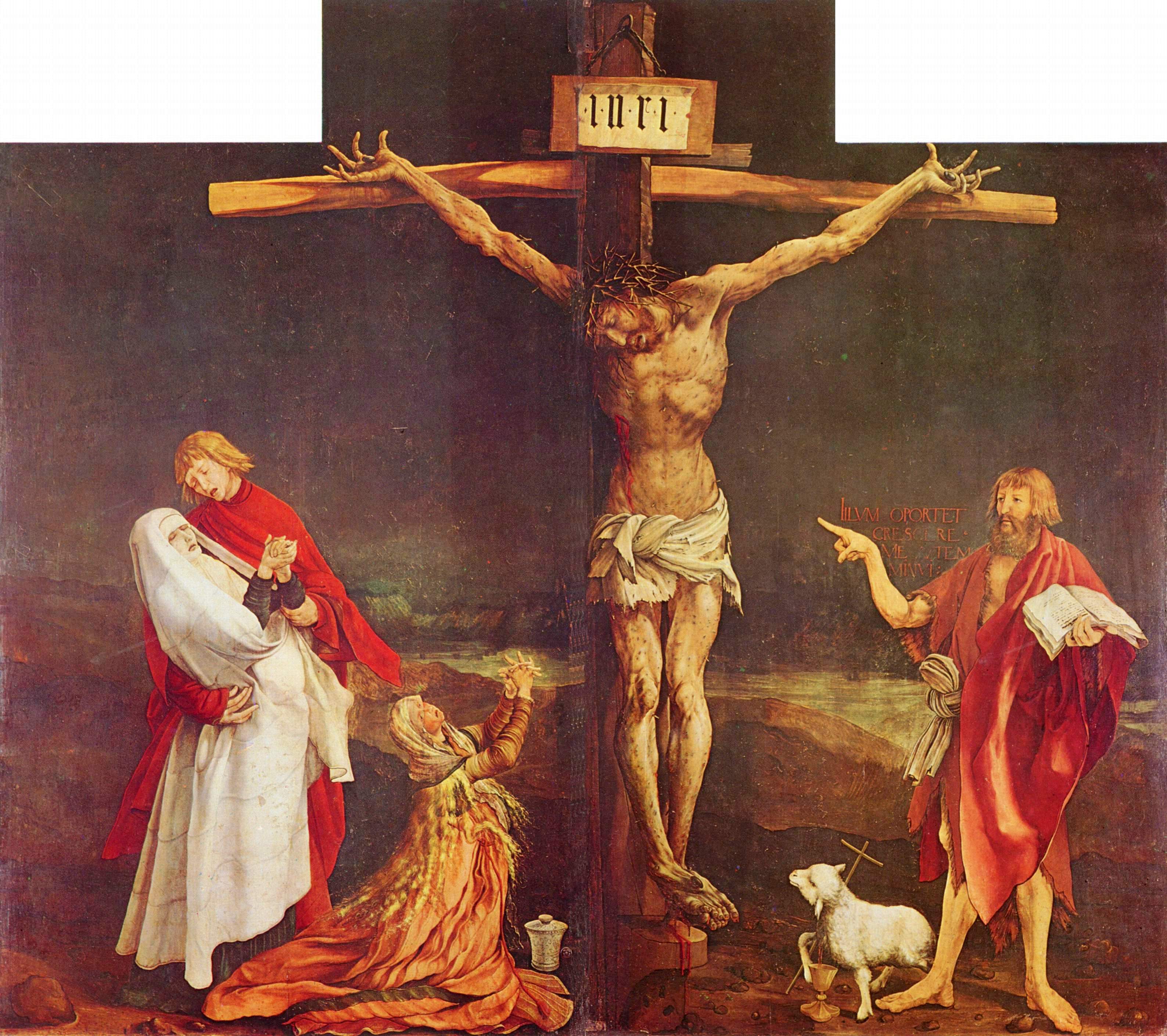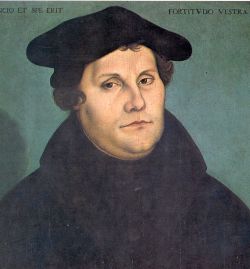|
Christian
Belief and
Thought
RELS
1202 NA / CAST 1202 NA
Spring
2011
Peter G. Ahr, Ph.D.
Class meets Tuesdays 5:45-8:15 p.m. in Fahy Hall, Room 122.
February 22, 2011
version; check regularly for revisions, particularly in the event
of weather closings.
|

The Relics of St John Chrysostom, Patriarch
of Constantinople from 398 to 404. The relics were stolen in 1204
during the Fourth Crusade and returned by the Pope to the Patriarch of
Constantinople in 2004. |
| Jan 18 |
Introduction to the course: the roots of
the Christian tradition in the Hebrew Bible
Christianity is, first of all, a tradition
(or perhaps better, a stream of traditions); we all encounter it at a
particular point in the history of those traditions, and any look at the
Christianity of a particular time and place is a look at a point in that
history. The history is a definite one, and by all accounts it
begins with the collection of literature that Jesus and his
contemporaries took as the word of God. In this first class we
will be giving an overview of that literature and its place in the
development of the Christian tradition, and a quick overview of the
tradition itself.
The first class will also cover the course
requirements and other matters dealt with in this syllabus.
Reading before class:
The Christian
Theological Tradition, Introduction, pp. 1-17
|
| Jan 25 |
God, the Covenant and the Hebrew tradition
The Exodus
The stories of the ancestors
The covenant
Stories of the beginnings David, Solomon and the Temple
The Prophets
The Exile
Second Temple Judaism
Read before class and post a Journal entry:
The Christian
Theological Tradition, chapters 1 through 5, pp. 19-89, especially
pp. 19-59
The Bible: Genesis and Exodus, especially Genesis chapters 1
through 23 and Exodus chapters 1 through 24
|

Michelangelo, The Creation of Adam
Sistine Chapel
|
| Feb 1 |
Jesus and the Gospels
Class cancelled tonight because of weather
conditions; see the revised syllabus for February 8, when we will cover
this material. You have one journal entry due, posted either for
February 1 or February 8. The class of February 15 will cover
material originally assigned for February 8 and February 15. |

Sandro Botticelli, The Adoration of the Magi
Florence: Uffizi |
| Feb 8 |
Jesus and the Gospels
Jesus
The Gospel traditions
The Synoptic question
(On the synoptic question, click
here for an excellent
analysis of this entire question)
Writing
Assignment
Choose one of the online texts from this syllabus, and prepare a close
reading of that text. Your reading must include a discussion of
the historical context of that particular text: where and when was it
written? What issues does it address? What does it take for
granted? What does it say about what Christian belief means?
What influence did the text have in its time and later? The final
paper should be five to eight pages in length. You may use the
course textbook and the notes appended to the online text as part of
your study; but your paper must include your own analysis of the text on
the basis of that information. Some of the texts on the syllabus
may be more difficult than others; please check with me in person or by
email to let me know what you propose to do. An outline of your paper is due to me by
February 22; and the paper itself is due no later than April 12.
Note that the
Resources on this syllabus can provide you with a number of valuable
sources that will help you with your research project, although your
final paper must reference both print and online sources.
Read before class and post a Journal entry:
The Christian
Theological Tradition, chapter 6, pp. 91-117
The Gospels of Luke and John, especially Luke chapters 1 through 6 and
22 through 24; and John chapters 1 through 3 and 11 through 21
|

The Tomb of Jesus, Church of the Holy Sepulchre |
| Feb 15 |
Early
Christianity
Paul and the first witnesses
Early Christian churches
Christianity and pagan culture
Persecution
Theological questions
From persecuted sect to state religion
Read before class and post a Journal entry:
The Christian
Theological Tradition, chapters 7 and 8, pp. 118-159
The Bible: The Acts of the Apostles, Paul's Letter to the Romans
Letter of Pliny to Trajan on the Christians
The
Gospel of Thomas: see how this text is different from the canonical
Gospels
The Didache
Tertullian on pagan learning
Origen on classical learning
Other reading:
Letter of Ignatius of Antioch to the Romans
Pagan charges of ritual cannibalism
The Martyrdom of Polycarp
The Passion of Perpetua and Felicity
|

Jesus as the Good Shepherd
Rome, 3rd century
|
| Feb 22 |
The
Imperial Church
Church councils
Theology as response to philosophical inquiry
Monasticism
Read
before class and post a Journal entry:
The Christian
Theological Tradition, chapters 9 and 10; pp. 161-193
The Creed of the Council of Nicaea
The Rule of
St. Benedict
Other reading:
Eusebius on the conversion of Constantine
The Edict of Milan
Athanasius' Life of Anthony the First Hermit
Term paper
outline due in class tonight
Review
for the Midterm Exam
|

Sant' Apollinare in Classe, Ravenna
|
|
Mar 1 |
Midterm Exam on the preceding
material
The exam will begin at 5:45, and will conclude by 7:15. The
remainder of the class time will be devoted to the topic of Islam.
You will answer three of the following questions in concise essays:
The
rise of Islam
Reading
before class:
The
Christian Theological Tradition,
chapter 12; pp. 211-234
|

Alhambra, Granada, Spain
|
|
Mar 8 |
Spring
Break - No class |
|
| Mar 15 |
Byzantine Christianity
The sacred emperor
The patriarchate
Byzantine monasticism
Devotion to the Virgin Mary
Icons
Read before
class and post a Journal entry:
The
Christian Theological Tradition, chapter 11, pp. 194-210
Other reading:
Easter Sermon of St. John Chrysostom
Procopius on Justinian's Church of the Holy Wisdom (the Hagia Sophia)
John
of Damascus' Defense of the Icons
Readings
on Hesychiasm
|

Justinian and his court.
Mosaic, San Vitale, Ravenna
|
| Mar 22 |
Latin Christianity in the Early Middle Ages
Develpment of theology
Conversion of the Germanic tribes
Monasteries and bishops
The Church in the developing feudal order
Read before
class and post a Journal entry:
The
Christian Theological Tradition, chapter 13; pp. 235-251
Other reading:
The
Conversion of Augustine
Vincent of Lerins' "canon"
Pope Leo I
and Attila
Pope
Gregory I's Life of St. Benedict
|

Pulpit, Aachen Cathedral |
| Mar 29 |
Latin Christianity in the High Middle Ages
Monasteries and religious orders
Cathedral building
Devotion to the Virgin Mary
Eucharistic Devotion
Pilgrimage and Crusade
Read before
class and post a Journal entry:
The
Christian Theological Tradition, chapters 14 and 15; pp. 252-287
Other reading:
Description of the Abbey of Clairvaux
Bernard of
Clairvaux' Apology, excerpt
Bernard of Clairvaux, On Loving God
The
Murder of Thomas a Becket
Joinville's Life of Louis IX
The
Testament of St. Francis of Assisi
Thomas
Aquinas on the Existence of God
The Fourth
Lateran Council's Decree against heresy
Miracle Tales of the Virgin
Tales of Confession
|

Sainte Chapelle, Paris
|
| Apr 5 |
Latin Christianity in the Late Middle Ages
Early reforms: Francis and others
Late medieval devotional life: clergy and laity
The late medieval papacy
The role of the church
The churches and the rising national states
Read before
class and post a Journal entry:
The
Christian Theological Tradition, chapters 16 and 17; pp. 288-315
|

Isenheim Altarpiece, Mattias Gruenewald |
| Apr 12 |
Reformations in the Western Churches
The churches and the rising
national states
The question of justification
The role of the church
Luther, Calvin, Zwingli, Henry VIII and Elizabeth I
English Puritanism
Read before
class:
The
Christian Theological Tradition, chapters 18 and 19; pp. 316-350
Other reading:
Luther's
Ninety-five Theses
Luther's Preface to Romans
The
Heidelberg Catechism
The
Thirty-Nine Articles
An Elizabethan Sermon on Salvation
Term
paper due at tonight's class
|

Martin Luther by Lukas Cranach
|
| Apr 19 |
Roman
Catholic Christianity
St. Peter's Basilica
The Council of Trent
The Jesuit order
Baroque Catholicism
Devotions
Read
before class and post a Journal entry:
The Christian
Theological Tradition, chapters 20
and 21; pp. 351-377
Other reading:
The Creed of Pius IV (1564)
The Council
of Trent on Original Sin
The Council
of Trent on the Sacraments
From
the Spiritual Exercises of Ignatius of Loyola
"Spiritual Canticle" of John of the Cross
|

Burial of the Count of Orgaz, El Greco
Toledo, Church of Santo Tomé |
| Apr 26 |
European Christianity in the
modern world
The French Revolution and its aftermath
Development of Christian missions beyond the Americas
Religion as
expression of national identity
Christianity and colonialism
Christianity and modern thought
Reading before
class:
The Christian Theological Tradition,
chapter 22; pp. 378-398
|

The galaxy Abell 370, photographed by the
Hubble telescope in 2009 |
| May 3 |
American
Christianity
Puritans and
Cavaliers
Established churches and the First Amendment
Roman Catholic immigration
The First Vatican Council
Reading before
class:
The
Christian Theological Tradition, chapter 23; pp. 399-421
Review
for
Final
Examination
|

St. Patrick's Cathedral, New York City |
| May 10 |
Final
Examination
The final
examination will be in class, during the regularly scheduled class
period.
|
Scope and
Purpose of the
Course
This course is intended to provide you with an
understanding of the variety of ways in which Christian people have lived their
faith in God. We will begin with a study of the basic stories and themes
in the Hebrew Bible, which formed the religious consciousness of Jesus and the
early Christians, and have served ever since as part of the authoritative
sources of Christian tradition. We will then look at the evidence of the
first generations of Christians: their recollection of the person and meaning of
Jesus of Nazareth, and the ways in which they preserved his story in the New
Testament and other early Christian writings. We will then look at the
early Christian churches in the Roman empire, to see the variety of ways in
which they understood and lived out their faith in Jesus: the issues which
confronted them, and the ways in which they dealt with these issues.
The sudden recognition of Christianity as the
official religion of the Roman empire brought to the fore the variety of
understandings of the meaning of Christian belief. The Roman imperial
system from Constantine forward looked to a unified Christian church as a
fundamental unifying force in the crumbling empire; we will look at the ways in
which the variety of Christian understandings came in conflict with the imperial
need for a unitary church.
We will look particularly at two basic forms of
Christianity which developed out of this imperial synthesis: the Byzantine
church, Greek-speaking and centered in the imperial capital of Constantinople;
and the Latin church of the western Mediterranean and north-west Europe.
We will look both at the "high" theology of these churches, and at the popular
forms of religious belief and practice as they developed over the centuries.
As European civilization developed in the middle
years of this millennium, a variety of movements led to the development of a
number of very different forms of Christianity over the course of the sixteenth
century. Out of these movements developed the Protestant and Roman
Catholic churches we recognize today, each with its distinctive forms of belief
and practice, and each with its own sense of fidelity to the ancient Christian
tradition.
In the last weeks of the course, we will examine the
impact of the European contact with the non-European world on the development of
the Christian tradition, with particular attention to the religious history of
the United States.
Obviously, an introductory course of this scope can
not cover all that might be said or known about this enormously rich topic; all
we will be able to do is examine some representative movements, texts, objects
and other evidence of the rich diversity of Christian belief and practice over
the past two millennia. At the same time, however, this understanding of
the development of Christianity as a religious tradition should help you
understand something more of your own religious background, and give you some of
the tools to refine your sense of religion well beyond the few weeks of this
course. If you are not of a Christian background, this course should give
you a sense of who these curious "Christians" are.
Course
Requirements:
The text for this course is
The Christian
Theological Tradition, edited by Catherine Cory and
Michael Hollerich, published in third edition by Prentice-Hall, ISBN 0-13-602832-1. It is available in
the University Bookstore. Each class during the semester will cover topics
discussed in the textbook; you are expected to have read the assigned chapters
of the textbook before the class in which the chapters are to be discussed,
since the class time will be devoted to discussing the matters raised in these
chapters.
The other book you will need for this course is the
Bible. Any 20th-century translation of the Bible is acceptable; I
personally prefer the Revised Standard Version for its fidelity to the
linguistic structure of the original texts. Certain books of the Bible are
included in the course reading, as noted above.
In addition, many classes will also be discussing
other materials available on the Web, especially primary source text and visual
materials. Links to these materials are in the syllabus; you are also
expected to have studied these materials before the class in which they will be
discussed. Links are visible as
lines of blue text
in the syllabus.
Grading Criteria:
- In order to make sure that you come to class
prepared for discussion, you are to write a paragraph of your reaction to the
reading for the class, or you answers to one of the review questions to the
assigned chapter, in your Journal in the Blackboard version of this course,
before the class begins. The Journal entries will count for 20% of your
final grade.
- You will also be required to prepare a paper of some
5-8 pages, giving a close reading of one of the original texts assigned for the
course. This paper will count for 15%
of your grade.
- Your class participation will count for another 15%
of your final grade.
- There will be a midterm examination, worth 20% of
the final grade, given on the assigned date.
- There will also be a cumulative final examination,
worth 30% of the final grade, given on the assigned examination date. The
final examination will be based on the in-class review done the previous week.
Resources:
In addition to the textbook and the materials
referenced in the syllabus, you may find additional material of interest in the
following locations:
Internet Resources for the
Study of Judaism and Christianity
Prof.
Mahlon Smith's Virtual
Religion Index: a very comprehensive set of links to materials on the
history of Christianity and of other religions
The New Jerusalem Mosaic
(website)
The Ecole Initiative, a
Hypertext Encyclopedia of Early Church History on the World Wide Web
The Internet
Ancient History Sourcebook (website with hundreds of links to ancient documents)
The Internet
Jewish History Sourcebook (website with hundreds of Jewish documents)
The Christian Catacombs
of Rome (website)
The Church of the
Holy Sepulchre in Jerusalem (website)
List of Popes from
the 1913 Catholic Encyclopedia (somewhat dated, but still useful)
Byzantine
Sources in Translation (index of available texts, with links)
Byzantine
Studies on the Internet (website with hundreds of texts)
Orthodox
Resources from the University of Athens
The Internet
Islamic History Sourcebook (website with hundreds of Islamic documents)
The Internet Medieval
Sourcebook (website with links to hundreds of medieval texts)
An excellent website (in
German) on the Thirty Years' War (1618-1648)
The Modern History
Sourcebook (website with links to hundreds of texts on modern history)
Image at top of page:
The Relics of St John Chrysostom, Patriarch
of Constantinople from 398 to 404. The relics were stolen in 1204
during the Fourth Crusade and returned by the Pope to the Patriarch of
Constantinople in 2004. The return of these relics was a
significant gesture of reconciliation between the Church of Rome and the Church
of Constantinople, the New Rome. In front of the marble casket holding the
relics is a modern icon of St. John Chrysostom. The writing on the icon
reads "O Agios Joannes o Chrysostomos": St. John the Golden-mouthed. He is
known by that name because of his brilliant preaching.













